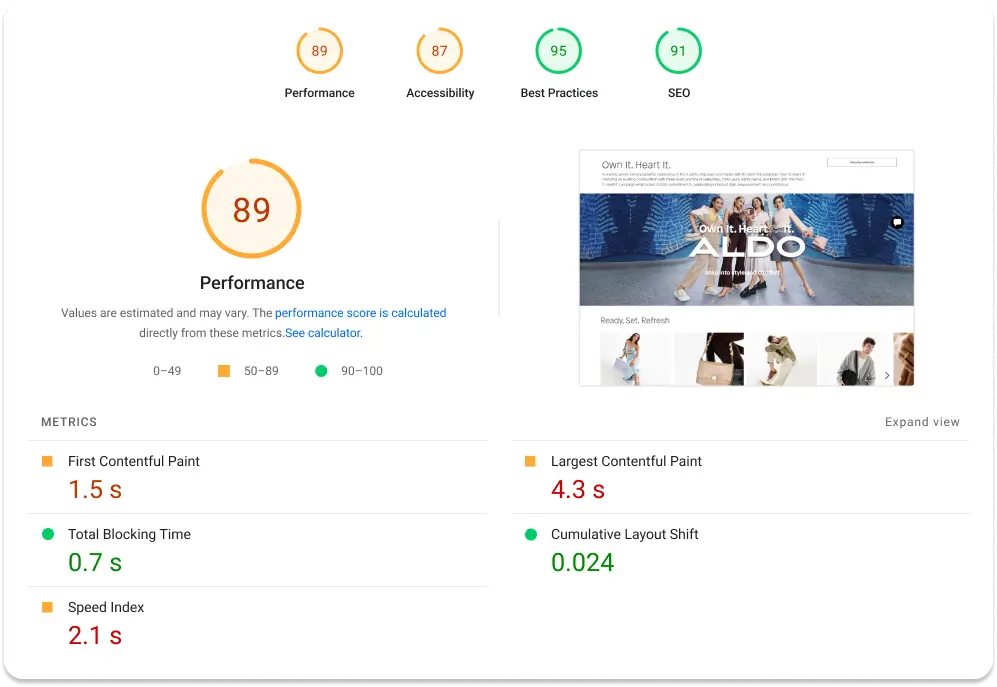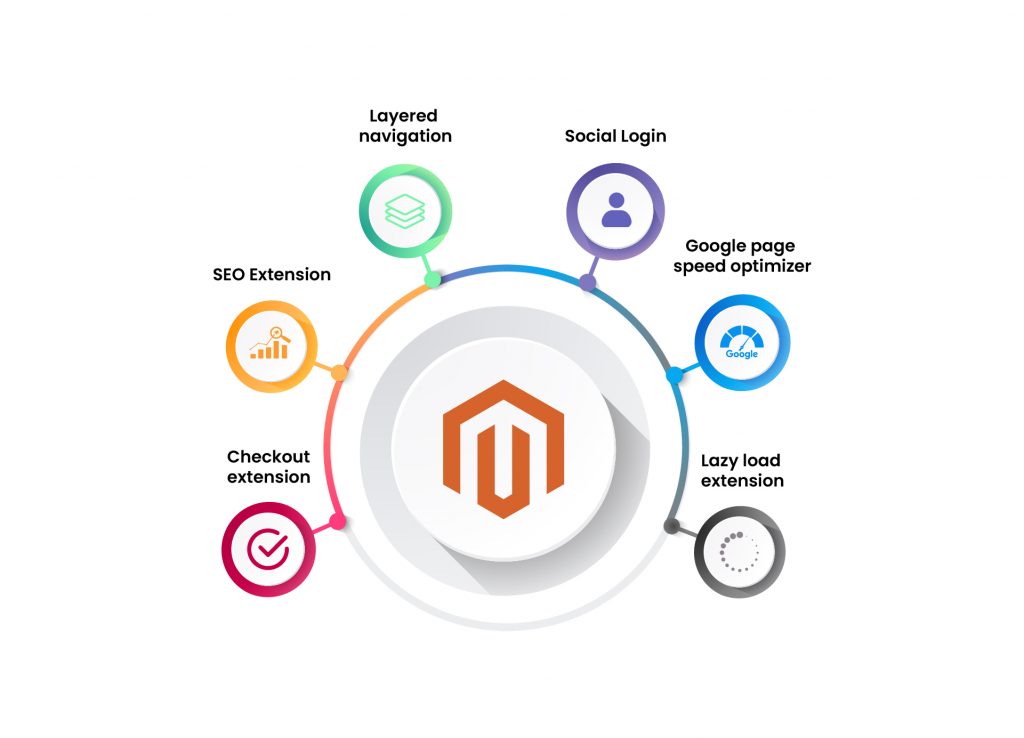In the ever-expanding world of eCommerce, developing a successful online store is both an exciting and challenging task. eCommerce businesses have witnessed exponential growth, with customers turning to the internet to fulfill their shopping needs.
Developing a eCommerce magento website is a complex task that involves numerous considerations, and one of the most popular platforms for this endeavor is Magento. However, even with its robust features and capabilities, developing an eCommerce Magento website can be riddled with pitfalls that can hinder your progress and success.
We at Codilar, have identified seven of the most common mistakes that occur during development and listed below how to avoid them.
1) Ignoring Design Thinking and Mobile Responsiveness:
In today’s digital landscape, mobile commerce is often the primary source of traffic. Neglecting mobile responsiveness can be detrimental to the success of your Magento website. With a significant portion of your potential customers accessing your site via mobile devices, it’s crucial more than ever to ensure a seamless mobile shopping experience.
User Experience (UX) is often a make or break factor for first time visitors and is what potentially converts them to long term customers. This is because mobile traffic typically tends to make decisions in the initial few seconds of browsing, thus emphasizing the need for an intuitive, clear and user-friendly design. It also avoids negatives such as high bounce rates, low SEO rank and cart abandonment.
To ensure this, here are some key steps that we follow:
PWA Responsive Design: Implement a responsive web design that adapts your website’s layout and content to various screen sizes and orientations, providing an optimal user experience on mobile devices. NexPWA, a Codilar PWA accelerator can be a game-changer, promising you to deliver an ultra-fast and user-friendly web design.
Mobile-First Approach: Design and build your website with a mobile-first mindset. Start by ensuring it performs well on mobile devices, and then scale up for larger screens.
Mobile Testing: Regularly test your website on various mobile devices and browsers to identify and fix any issues.
By addressing these issues and ensuring a smooth mobile browsing and user experience, your website can attract and retain visitors, improve search rankings, and enhance your brand’s online reach. Check out our blog to discover the top 7 tips to enhance your website’s UI/UX design.
Codilar advises the use of responsive design principles. This approach ensures that your Magento website functions flawlessly on all devices, regardless of screen size or orientation. Responsive design adapts the layout, content, and features to provide an optimal user experience, whether your customers are using a smartphone, tablet, or desktop computer.
Take a look at how we have implemented responsive design for our most valued client, Aldo. Witness the real impact as they experience tangible results through an optimized and mobile-friendly website.
2) Overlooking Performance Optimization:
The need for a fast and efficient website cannot be emphasized enough.
Reduced Conversions: A sluggish website can hinder the conversion rate, as visitors are less likely to complete actions like making a purchase, signing up, or filling out checkout details.
So therefore consider these performance optimization best practices that we use:
Compress Images: Use optimized and compressed images to reduce file sizes without compromising quality.
Leverage Content Delivery Networks (CDNs): CDNs distribute your website’s content across multiple servers globally, reducing server load times and improving page loading speed for users.
Lean Coding: Remove unnecessary code and whitespace from HTML, CSS, and JavaScript files to reduce their size.
Browser Caching: Implement browser caching to store website data locally, reducing the need to re-download assets on subsequent visits.
Performance optimization isn’t just a technical necessity as it directly impacts user satisfaction, conversion rates, and revenue. By investing in performance optimization during website development and consistently maintaining it, you can provide visitors with a fast and efficient online experience, ultimately improving your website’s success and overall eCommerce growth. See below for an overview of Aldo’s Google Page Speed post-expert performance optimization.

You can also experience the power of our ingrown product, cWarmer. This SaaS tool ensures lightning-fast load times by intelligently caching all your store’s pages using a smart prioritization algorithm.
3) Neglecting SEO Best Practices:
Search engine optimization (SEO) is a vital component of any successful eCommerce website. Neglecting SEO can result in your website getting lost in the vast digital landscape, making it challenging for potential customers to find you among thousands of digital stores!
Here’s why neglecting SEO can be dangerous, and how to avoid this common mistake:
Limited Visibility: When SEO best practices are disregarded, search engines may struggle to index and rank your website, resulting in lower visibility in search results. This limits your site’s exposure to potential customers.
Reduced Organic Traffic: Without proper SEO optimization, your website won’t appear prominently in search engine results pages (SERPs). This leads to a decrease in organic traffic, which is a valuable source of visiting customers. Here’s a Google snippet of our SEO efforts for Seedsman, helping them rank second for the keyword ‘auto flowering seeds’.

To avoid these mistakes, prioritize SEO best practices throughout the website development process such as:
Keyword Research: Identify relevant keywords and phrases for your niche and integrate them naturally into your content.
Optimize On-Page Elements: Pay attention to title tags, meta descriptions, and header tags to make your content more search-engine-friendly.
Quality Content: Create high-quality, informative, and engaging content that meets user needs and interests.
Always remember, SEO is a long-term investment that pays off in improved visibility in search results, attracting more organic traffic, and ultimately resulting in brand success.
4) Underestimating Security Concerns:
Ever think about the amount of user data your website stores? eCommerce websites store a lot of sensitive customer information, cookie data, advertising preferences, payment methods etc. This makes them prime targets for cyberattacks.
Disregarding security concerns can result in data breaches, loss of customer trust, and even legal ramifications.
We implement various security measures, such as SSL certificates, data encryption, authentication, frequent security audits, and timely Magento updates to patch vulnerabilities.
5) The selection and development of extensions architecture.
This is a pivotal step in the Magento development process. Extensions, also known as plugins or modules, are essential components that enhance the functionality of a Magento website and give it a prime competitive advantage and flexibility over other eCommerce platforms.
Here’s how these steps are crucial to help you get the most out of Magento:
Enhanced Functionality: Magento’s core functionality, while dynamic, may not cover all the specific needs of your eCommerce business. Well-designed extensions allow you to extend and customize your store’s features, meeting your unique requirements. This can include features like payment gateways, marketing tools, or omnichannel.
Scalability: A properly architected extension is built to scale, accommodating the growth of your eCommerce business. It ensures that as your needs evolve, the extension can adapt, preventing the need for the effort, time and cost of frequent replacements or redevelopments.
Compatibility: Extensions with good architecture are designed to be compatible with different versions of Magento and other extensions. This compatibility ensures that they can coexist harmoniously and that updates to your Magento instance won’t cause conflicts.
Below are some of the top Magento extensions that will help you get started while enhancing your store’s functionality.

To ensure the successful selection and development of extensions with a long term architecture we ensure the following steps:
Research and Due Diligence: Before choosing an extension, thoroughly research its functionality, reviews, and reputation. Ensure it aligns with your business objectives.
Architecture Evaluation: Assess the architecture of the extension. Ensure it adheres to Magento’s best practices, follows coding standards, and is well-documented.
Custom Development: When developing custom extensions, we follow Magento’s guidelines for module development. This includes adhering to the platform’s architecture, following best coding practices, and thoroughly testing the extension.
Selecting and developing extensions with proper architecture is a critical aspect of Magento development. It ensures your eCommerce website remains flexible, secure, and high-performing while accommodating the evolving needs of your business.
6) Not regularly updating, maintaining and backing your Magento instance:
Often this is a post deployment pitfall that companies fall into leading to concerns like:
Security Vulnerabilities: Regular updates are essential to patch known security vulnerabilities. Hackers actively target outdated systems, and a neglected Magento instance can become an easy target for data breaches, fraud, and other security threats. Maintaining the latest security patches and updates helps safeguard customer information and maintains trust in your brand.
Bug Fixes: Updates often include bug fixes and enhancements that improve the overall functionality and user experience of your site. Ignoring these updates can lead to an accumulation of issues that impact the reliability and usability of your eCommerce platform.
Compatibility: As technology evolves, Magento must adapt to ensure compatibility with newer browsers, devices, and third-party integrations. Skipping updates can result in compatibility issues, disrupting the smooth operation of your eCommerce site.
Data Protection: Regular backups are essential to protect your valuable data. In the event of data loss due to technical failures, cyberattacks, or human errors, backups ensure you can quickly recover and minimize downtime.
Therefore, regular updates, maintenance, and backups are integral to the security, performance, and longevity of your Magento instance.
7) A complicated checkout flow
Although the checkout page is one of the last pieces of interaction between your customers and the website, it is one of the most important ones for the following reasons:
Customer Lifetime Value: The checkout process is the final step in a customer’s journey on your website. A smooth and hassle-free checkout experience leaves a lasting positive impression, making it more likely for users to return and make future purchases.
Reduced Cart Abandonment: A complex or cumbersome checkout process is a leading cause of cart abandonment. When users encounter obstacles like excessive form fields, unexpected costs, or slow loading times, they are more likely to abandon their shopping carts, resulting in lost sales.
Lower Customer Support Demands: A straightforward checkout process reduces the need for customer support inquiries related to payment issues and order completion, freeing up resources for other critical aspects of your business.
This means a smooth checkout process is not just a “nice-to-have” feature but a critical component of your Magento website’s success.

Conclusion
Developing a successful eCommerce Magento website is a constantly evolving workstream, but by avoiding these common pitfalls, you can significantly improve your success. Meticulous planning, mobile responsiveness, performance optimization, SEO best practices, security measures, a focus on user experience, and efficient inventory management are key factors that should command your attention throughout the development process.
Codilar, with its expertise in eCommerce and Magento development, can be a valuable partner in helping you navigate these challenges and create a thriving online business. To know more about some of the other mistakes during Magento development and how to avoid them, or to inquire about any other queries simply drop us an email at sales@codilar.com and we will guide you to our subject matter experts.









